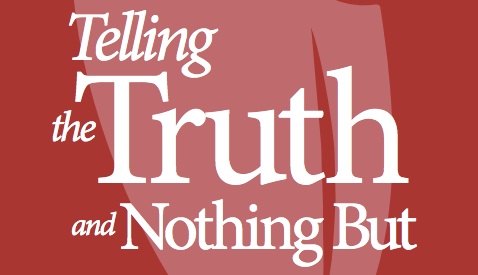By the end of last summer, I was worn out.
It seemed like every week brought a new, awful incident of plagiarism or fabrication at news organizations large and small. My job was to write about all of them, to try and get more information about what happened and why, and to make sense of what was taking place.
A lot of the time I was rebuffed by senior newsroom staffers when asking for more information or basic disclosure.
Why I was expending so much effort when it seemed no one wanted to talk about what was going on? I was frustrated, and I channeled that into a post called “Journalism’s Summer of Sin marked by plagiarism, fabrication, obfuscation”, which listed every recent known incident and called out newsroom leaders for being unwilling to engage and show accountability.
“When the worst happens at a news organization, wagons are circled, stonewalls erected,” I said. “It’s a corrosive form of hypocrisy when — in a moment of crisis — journalists do the exact things that drive them crazy.”
I didn’t expect much to happen when I suggested journalism associations come together “to have their ethics committees (and/or boards) look at this issue, gather what material and policies they have, and determine what guidance they can offer to newsrooms. This needs to be an initiative that cuts across organizations, mediums and disciplines to serve all journalists.”
Then I got an email from American Copy Editors Society President Teresa Schmedding that basically said, “Okay, let’s do this.”
The result is the National Summit on Plagiarism and Fabrication taking place today in St. Louis, and the release of a free ebook, “Telling the Truth and Nothing But”, that offers the kind of specific guidance and useful information that newsrooms need to detect, prevent and handle incidents of plagiarism and fabrication.
Under Schmedding’s leadership,14 news organizations, 10 journalism institutions, and 10 journalism associations collaborated on the book and the Summit. It’s exactly what I suggested, but I never expected to see this day. All the credit goes to her and the leaders and contributors who stepped up to produce the book and gathering in a very short period of time.
As for the book, it’s a fantastic resource for any editorial operation.
Principles for a policy
In just under 50 pages, “Telling the Truth and Nothing But” manages to define the problem(s), address who commits these offenses and attempt to explain them. Most important, it’s filled with useful and actionable advice and strategies for newsrooms and other editorial operations.
By using “The Truth” as a guide, any organization can create a sound policy for attribution, plagiarism and fabrication, create checks to help prevent the worst from happening, and set down clear policies about what to do if it does occur.
This should be done in every newsroom. The book is a roadmap that makes it easy to implement, thereby eliminating the excuse that an organization doesn’t have the resources or information needed to address these important issues.
One item I want to highlight is the guidance for creating a policy about plagiarism, fabrication and attribution. Included in that guidance is a set of attributes that a good policy has. Here they are, with some parenthetical context form me:
- There’s no room for confusion. (Be clear about the offenses and that they’re unacceptable.)
- It’s widely available. (Make it public.)
- It involves random checks. (Proactive action is necessary.)
- It addresses attribution and linking. (Create a culture of attribution.)
- It’s clear about discipline. (What happens to the offender?)
- It treats everyone equally. (Doesn’t matter if you’re a star or an intern.)
My experience is that numbers 2, 3, 5 and 6 are not common in newsroom policies. This underlines the work to be done.
Addressing all mediums
The book was written by people working print, broadcast and digital, and it has something for every medium. It also of course takes into account social media and other emerging platforms.
In one section, it points to how attribution on social media is sometimes automated, and how this is an example for for journalists to follow in their work:
Indeed, the practices of social media offer lessons in how journalists can do a better job of attribution regardless of medium or technology. If a tweet pecked out on a cellphone can convey proper attribution through an RT, an @ citation and a hyperlink in only 140 characters, there is no excuse for journalists operating with greater freedom in print, online or broadcasting. The simple words “As reported by … ” can go a long way.
When it comes to broadcast media and plagiarism, it offers some medium-specific guidance:
The key to combating plagiarism in television and radio reporting is a determination to generate original stories, looking for second-day ledes to pieces that may have originated elsewhere and providing clear, complete attribution for work derived from other sources.
A golden rule, and the work ahead
One fundamental piece of guidance in the book is the “golden rule of attribution”:
Principled professionals credit the work of others, treating others as they would like to be treated themselves.
This simple rule is a useful way to make journalists think about the right way to attribute work, a good call to fairness.
In the end, all the necessary information guidance is there in the book, from the experts, and with plenty of examples.
As I said to many of my co-contributors last night, now it’s time to make this resource become widely known and implemented. That’s the tough challenge ahead.
We’ve already heard of one news organization that plans to hand it out to new interns. I hope that’s just the start of seeing this spread.







Comments